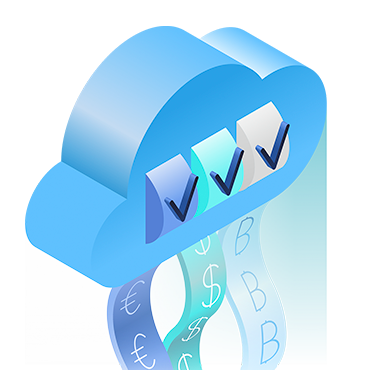Top 10 DevOps Kubernetes CI/CD Tools
Updated 13 Oct 2022
Due to its extensive API and developer-friendly features, Kubernetes is now the most popular container management software. You can build apps that operate on both private clouds and public clouds by utilizing cloud native DevOps with Kubernetes. Its out-of-the-box capabilities enable it to deploy and maintain the availability of hundreds of instances across data centers. These capabilities let DevOps do their own thing while everything works seamlessly.
More autonomy is needed when creating and deploying apps in order to match Kubernetes’ degree of automation. In this situation, the finest cloud-native and contemporary techniques for developing, testing, and deploying apps with the least amount of human intervention are continuous integration (CI) and continuous delivery (CD).
In a Kubernetes-based context, a CI/CD pipeline typically consists of four key elements: a version control system, a CI system, a Docker registry, and a Kubernetes cluster.
The manual processes of gathering the most recent changes from the source code repository, compiling, testing, and deploying to the cluster are replaced by CI/CD technologies, which employ a pipeline method. DevOps K8s requires the extension of CI/CD pipelines with a container registry, configuration management, Helm, and different cluster environments.
Kubernetes: A Facilitator of Enterprise DevOps
Kubernetes is excellent for developing, implementing, and expanding enterprise-grade DevOps pipelines due to a number of its features and capabilities. So much so that it is now intertwined with DevOps best practices. Teams can automate the manual work that orchestration would normally need thanks to these features. Teams need this kind of automation if they want to boost output or, more significantly, quality.
Software distribution is seamless and continuous thanks to the coordination and automation of the aforementioned components. Our top 10 Kubernetes CI/CD DevOps tools list is shown below.
10 Best DevOps Tools 2022
-
Draft
On Kubernetes, a tool called Draft is used to build cloud-based apps. Microsoft created the build and deployment tool. After your code has been through continuous integration, you may create Docker images using Draft. It may also be used to make Helm charts, which produce the YAML files required for Kubernetes application deployment.
The benefit of this tool is that you can deploy and bundle apps using Helm in conjunction with it. The drawback is that it needs a great deal of setup.
-
CircleCI
A CI/CD technology called CircleCI promotes quick software development and publication. The whole user workflow, from code development and testing to deployment, can be automated using CircleCI.
To make builds when new code lines are committed, CircleCI may be integrated with GitHub, GitHub Enterprise, and Bitbucket. CircleCI also offers cloud-managed continuous integration hosting or uses local infrastructure that is protected by a firewall.
-
Jenkins
One of the most well-liked and potent CI technologies utilized for Kubernetes deployment is Jenkins X. It is a free automation tool with integrated plugins for continuous integration. Java was used to write it.
To make it simpler for you to make changes to the project, you may use Jenkins to continually build and test your software projects. Through the incorporation of several testing and deployment methods, you may utilize this tool to continually deliver your project. Jenkins, although a powerful tool, may be complicated and prone to mistakes.
-
Travis CI
A CI service used to create and test projects is called Travis CI. New contributions are automatically found by Travis CI and published to a GitHub repository. Additionally, Travis CI will build the project and run tests after each new code commit. Numerous build settings and languages, including Node, PHP, Python, Java, and Perl, are supported by the tool.
-
Weave Cloud
This is one of the top DevOps tools around. With the help of the CD tool Weave Cloud, you can quickly manage and monitor your Docker containers. Additionally, it offers a simple method for setting up your Kubernetes cluster and CI/CD workflow. It enables quicker rollouts, updates, and rollbacks for the apps you want to deploy. Git serves as the single source of truth for declarative infrastructure and apps in this tool. The drawback is that it takes a lot of tweaking to get it to function effectively.
-
Codefresh
Helm charts are supported by the CD/CD pipeline tool called Codefresh. You may utilize your own CI and image repository with it. It aids in creating a straightforward yet effective CI/CD workflow. It has a large selection of plugins that you may use to interface with your preferred tools. The drawback is that your pipeline becomes more complicated since third-party solutions are configured with their own Graphical User Interface.
-
GitLab
GitLab is one of the best DevOps tools used by organizations around the world for its many features.GitLab is a collection of instruments for controlling various phases of the software development lifecycle. The main offering is a Git repository manager for the web with tools for issue tracking, analytics, and a wiki.
With each change or push on GitLab, you have the option to start builds, launch tests, and deploy code. Jobs can be created on another server, on a virtual machine, or using Docker containers.
GitLab enables customers to quickly iterate and produce business value by allowing them to design, develop, and manage codes and project data from a single distributed version control system, as well as see, generate, and manage codes and project data using branching tools. It offers scalability and a single source of truth for working together on projects and code.
-
Spinnaker
Netflix created the open-source tool known as Spinnaker. It controls deployments and pipelines and has the ability to handle Helm charts. It is a multi-cloud, open-source solution that offers continuous delivery with outstanding efficiency. The drawback is that because this solution was initially designed to serve VMs rather than Kubernetes, it might be a bit challenging to set up.
-
GoCD
GoCD is an open-source development and software release solution from ThoughtWorks that supports contemporary infrastructure on CI/CD.
GoCD gives customers control over their end-to-end workflow and provides tracking changes from committing to deployment at a glance while making it simple to specify dependencies for quick feedback and on-demand deployments. Additionally, users have the ability to share trustworthy artifacts since each pipeline instance is linked to a specific changeset.
-
Ksonnet and Jsonnet
Ksonnet is a configuration management tool built on the JSON templating language. It offers a means of packaging your Kubernetes resources so that you can subsequently utilize those packages to produce the deployment configuration files you need. While Jsonnet is the language used to describe your program, Ksonnet is the command-line interface.
The benefit of this technology is that JSON-experienced developers may simply publish their apps using Jsonnet. A developer would naturally need to learn the distinctions between working with Jsonnet and just utilizing JSON since they exist.
Conclusion
Continuous Integration and Continuous Delivery have recently gained significant traction among developers. Without a good CI/CD pipeline, it is impossible to consider developing new software. All the tools are being updated to interface with Kubernetes as it quickly gains popularity. In the post above, we made an effort to put together a list of the most well-liked Kubernetes CI/CD technologies for you.
The CI/CD tools listed below are the most developed ones with crucial features for your projects. Your ultimate decision will be influenced by your needs, the infrastructure that is in place, as well as opportunities for improvement in the future.
The CI/CD and DevOps trends will keep changing, giving the market room to expand and advance. This list will be updated to guarantee that the information is accurate for you as the environment changes.



